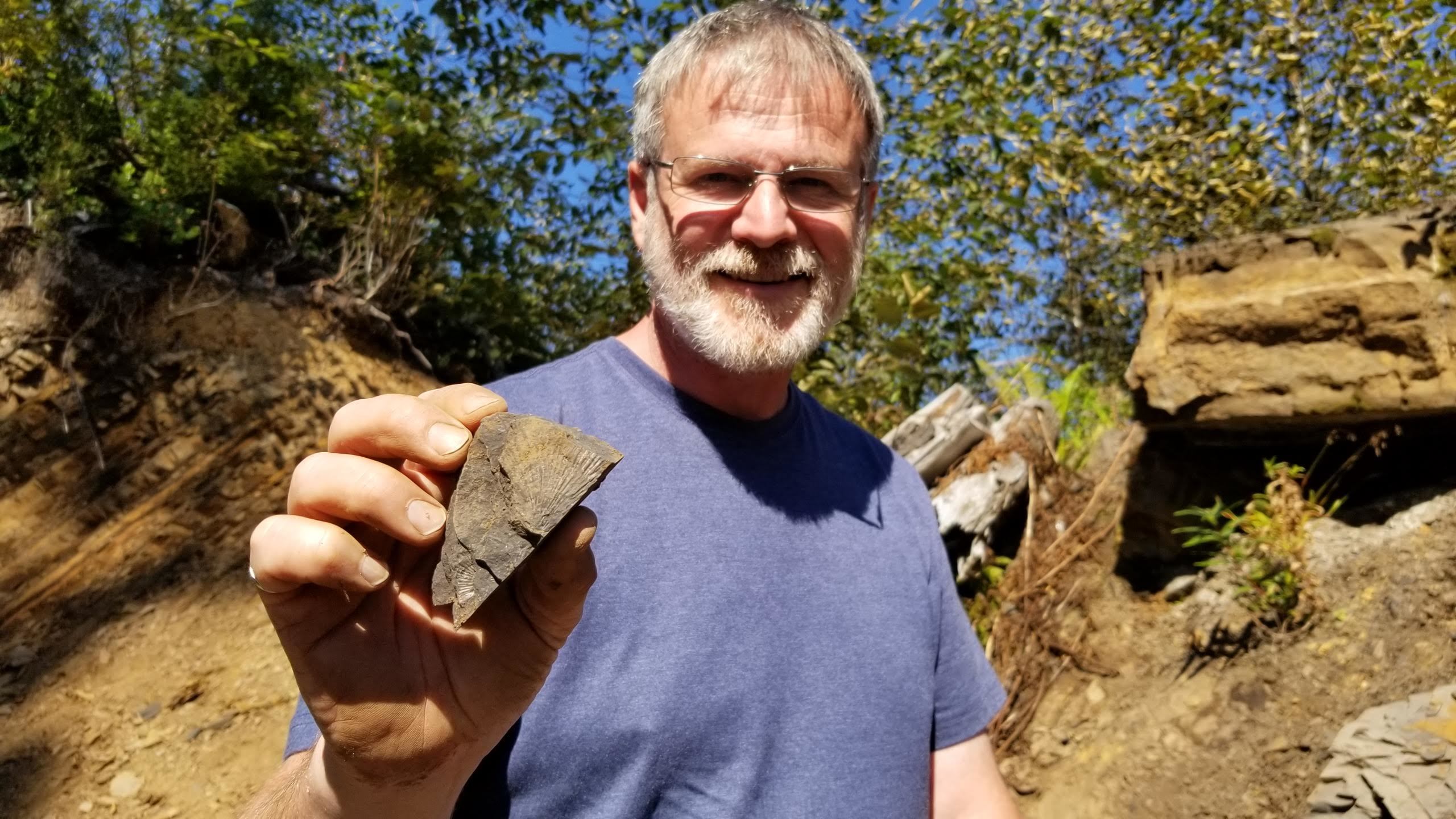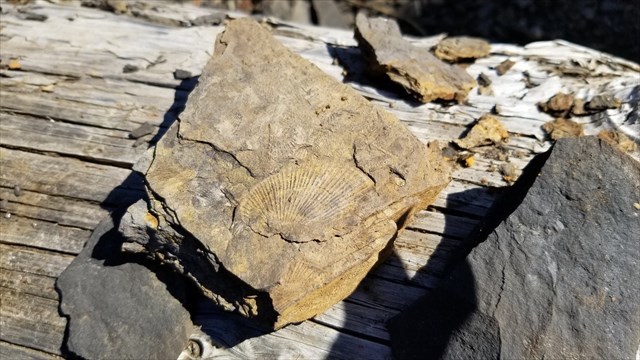On the way to Holberg, and San Josef Bay, there is an amazing fossil bed site that should not be missed. We were thankful that a traditional cache had been placed nearby to draw our attention to the location, and after visiting we felt that an EarthCache could add to the over-all experience.
A 4x4 with reasonable clearance can easily make it to GZ. You may have to be OK with some west-coast pinstriping as well. We have provided coordinates for the turn off from the Holberg Road to make your way up here, but the route is incredibly well signed by the Rotary Club of Port Hardy.
Explore this area freely but carefully please. We ask that you consider not removing the fossils but leave them as part of the display for others to enjoy after you.
To Claim This EarthCache:
Please send us the answers to these questions BEFORE logging your find for this EarthCache.
1. Identify the primary type of rock the fossils are found in here.
2. Upload a picture of a fossil you find here, inlcude yourself or a personal item in the photo. (Photos related to geological lessons are permitted to be required for EarthCaches)
3. Of the fossils found in the Goodspeed Fossil bed, what is the most common animal that has been fossilized?
4. Of the two types of fossils identified in the section "Fossils" which are the ones you've found here?
5. What does finding this kind of fossil here indicate about where this rock was formed?
Fossil Beds
Fossil beds are areas of sedimentary stone where the fossilized remains of organisms can be found. These areas give us a unique time machine where we can get a glimpse back at life as it existed in the area millions of years ago. BC has a number of well known fossil beds, and the Goodspeed Fossil Bed should be amongst them.
Fossil beds are almost exclusively sedimentary rock as metamorphoic and igneous rock is created by pressure and heat that would normally destroy the fossil record. There are different types of sedimentary rock that can make up a fossil bed, and that will be a function of the conditions under which the rock was formed, and the heat and pressure the rock was subject to over the millions of years of it's formation.
Northern Vancouver Island is made up of a variety of different rock formations, from sedimentary rock that was built up by millions of years of sand and mud hardening under heat and pressure, to igneous rock formation resulting from lava flows. Each of these formations forms its own unique window back in time, but of course, the sedimentary fossil beds that form in the Nanaimo Group, Queen Charlotte Group, Parson Bay, and Quatsino Formations have the most accessible information for us due to the fossil record they hold.
Fossils
"When a plant or animal dies, it may be preserved in a number of ways. Usually, this happens because it is covered in sand or silt fairly soon after it dies. This has the effect of protecting the dead plant or animal. Over many years the sand or silt continues to be deposited until it turns to stone under its own weight. Fine sand turns to sandstone, silt turns to shale, and a mixture of sand and rocks will turn to a rocky sandstone called a conglomerate. The buried plant or animal may be preserved leaving a 'body fossil'.It may dissolve away leaving only an imprint of its shape in the rock (a 'mold fossil'). If exposed to fresh water, the minerals in the water may replace the cells in the organism and a body fossil, made up of the new minerals, will be the result. Plants are often preserved as a black carbon imprint of the leaves or branches (all the minerals except for the carbon are gone). "
(excerpt with permission from Landsharkz EarthCache "20 Million Year Old Earthcache" (GCQHZW) )

The Goodspeed Fossil Bed
When we visited, there was a significant display of fossils on a large flat rock and a log near GZ. We hope this remains the case for your visit and encourage you to add any you find to the "open air museum" here.

Along the Goodspeed River, geological forces have moved and exposed rock that was formed as layers upon layers of sand, silt and mud hardened over eons to form the buff coloured sandstone, and the much darker shale. Within these layers were a variety of plants and animals, and at the Goodspeed Fossil Bed it is strongly evident that there was a huge concentration of a particular form of animal life.
This fossil bed is part of the Parson Bay Formation, and consists of mudstone, shale, and clastic sediments. These layers are dated as the Upper Triassic Period and contain an exceptionally high amount bivalve fossils, quite likely brachiopods.
These bivalves were known to live in intertidal and subtidal zones (areas at or near where the tides would come in and out along the ocean shore). The geological processes noted above resulted in them being preserved for us to discover and learn from today.
As you explore through the Goodspeed Fossil Bed, you'll learn quickly that the fossils are found predominantly in one type of the sedimentary rock present here. We ask you to review the information provided and observe your surroundings to determine which rock type is more fossil rich, and therefore makes the better "time machine" to view life from the past.
Sources:
PRELIMINARY GEOLOGY OF THE QUATSINO - PORT McNEILL MAP AREAS, NORTHERN VANCOUVER ISLAND (92U12,ll)
By G. T. Nixon, .J. L. Hammack, V. M. Koyanagi, G. J. Payie, A. PanteleJev, N. W. D. Massey, J. V. Hamilton, B. C. Geological Survey Branch and J. W. Haggart, Geological Survey of Canada
https://citeseerx.ist.psu.edu/viewdoc/download?doi=10.1.1.176.5463&rep=rep1&type=pdf
20 Million Year Old Earthcache" (GCQHZW)